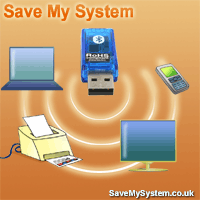The HTC Thunderbolt is an Android-powered device with some of the hottest features currently out. We all want to know how to turn our mobile devices into a PowerPoint machine. Presentations can be cumbersome to work with because of the creation of multiple files during creation, usually for audio narration and images. The best and easiest thing to do is to turn all of your files into just one big one.
So in order to do this the best thing is to turn all of the files into a video files. A number of tools are available to accomplish this, such as WonderShare PPT2Video (a pay product) or E.M. Free PowerPoint Video Converter. All of the tools found within these programs will turn converting any narration or audio into the simply press of a button. Create an MPEG-4 or H.264 file to ensure the video is small and high-quality. Once the video has been converted all you need to do is also save it on to your mobile phone. The Thunderbolt can be connected directly to a computer.
Now that the video was on our phone, we tested playback to ensure it was free of issues. Once the video has been tested you can then connect the phone to a TV or to a projector. The Thunderbolt, as well as many other smart phones, are capable of displaying video to an HDTV using an HDMI cable. These types of smart phone also have DLNA support which means that they can display videos over Wi-Fi. If the TV or projector and your phone support DLNA, connect your phone to the DLNA server (the TV receiver), and send video. If your television or projector does not support DLNA, adapters are available. Briefly searching for accessories on Google can bring up a long list of websites that sell HDMI cables.
The case can sometimes allow an even easier way to connect to HDMI playback. You then only need to connect the HDMI cable to the television. After a few quick taps on the screen protector, our presentation video was playing back flawlessly. We then disconnected the HDMI cable so that we may test out the DLNA features. After connecting the phone to the television, playback worked flawlessly.
Convert all of your presentations with the comfort of maintaining quality and mobility. The only hard part about this process is testing the first presentation to see if your device can handle it.
So in order to do this the best thing is to turn all of the files into a video files. A number of tools are available to accomplish this, such as WonderShare PPT2Video (a pay product) or E.M. Free PowerPoint Video Converter. All of the tools found within these programs will turn converting any narration or audio into the simply press of a button. Create an MPEG-4 or H.264 file to ensure the video is small and high-quality. Once the video has been converted all you need to do is also save it on to your mobile phone. The Thunderbolt can be connected directly to a computer.
Now that the video was on our phone, we tested playback to ensure it was free of issues. Once the video has been tested you can then connect the phone to a TV or to a projector. The Thunderbolt, as well as many other smart phones, are capable of displaying video to an HDTV using an HDMI cable. These types of smart phone also have DLNA support which means that they can display videos over Wi-Fi. If the TV or projector and your phone support DLNA, connect your phone to the DLNA server (the TV receiver), and send video. If your television or projector does not support DLNA, adapters are available. Briefly searching for accessories on Google can bring up a long list of websites that sell HDMI cables.
The case can sometimes allow an even easier way to connect to HDMI playback. You then only need to connect the HDMI cable to the television. After a few quick taps on the screen protector, our presentation video was playing back flawlessly. We then disconnected the HDMI cable so that we may test out the DLNA features. After connecting the phone to the television, playback worked flawlessly.
Convert all of your presentations with the comfort of maintaining quality and mobility. The only hard part about this process is testing the first presentation to see if your device can handle it.
About the Author:
If you already own the HTC Thunderbolt and are looking for HTC Thunderbolt accessories, then visit ThinkTHUNDERBOLT to find the best selection on HTC Thunderbolt case.

No comments:
Post a Comment